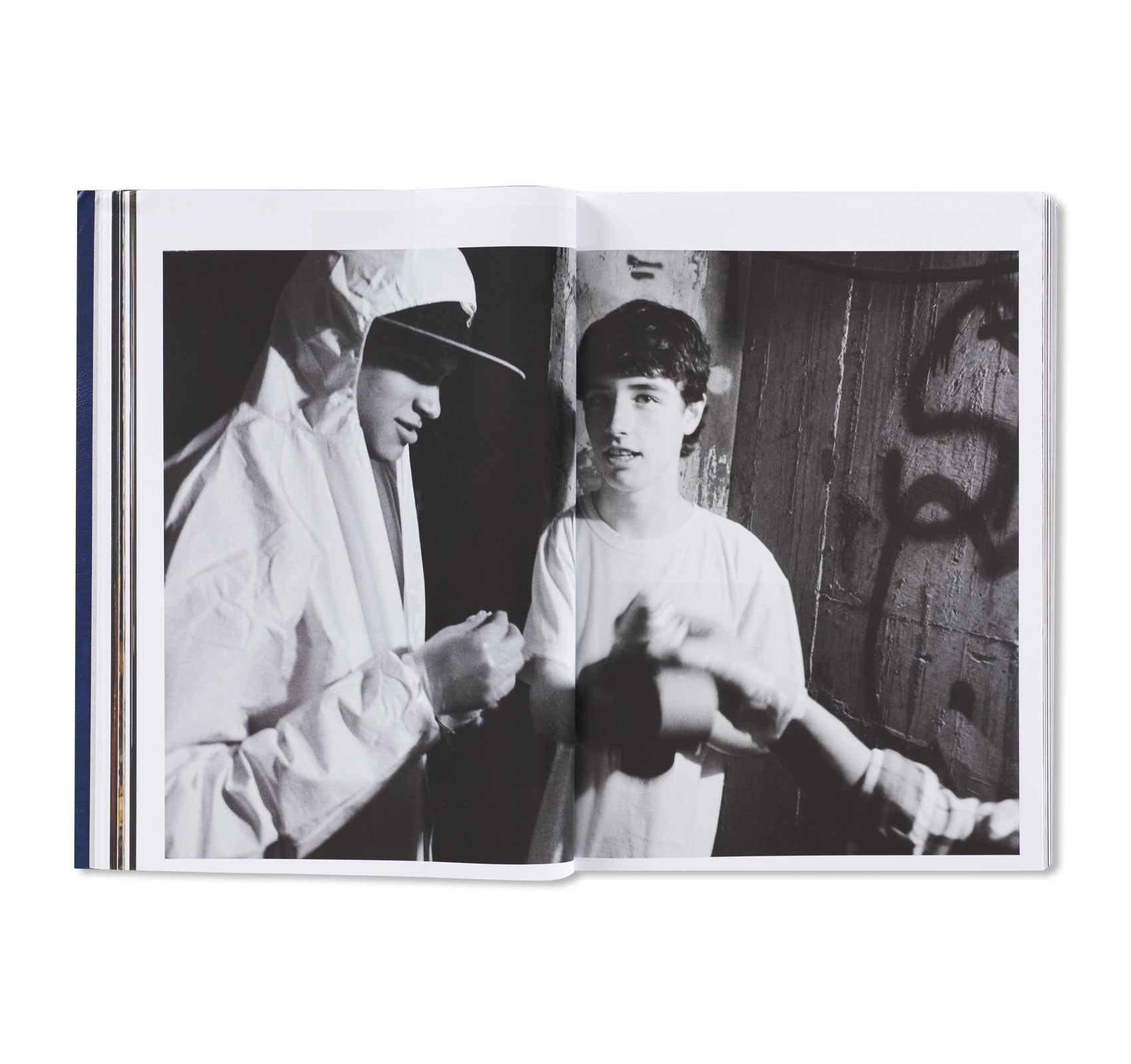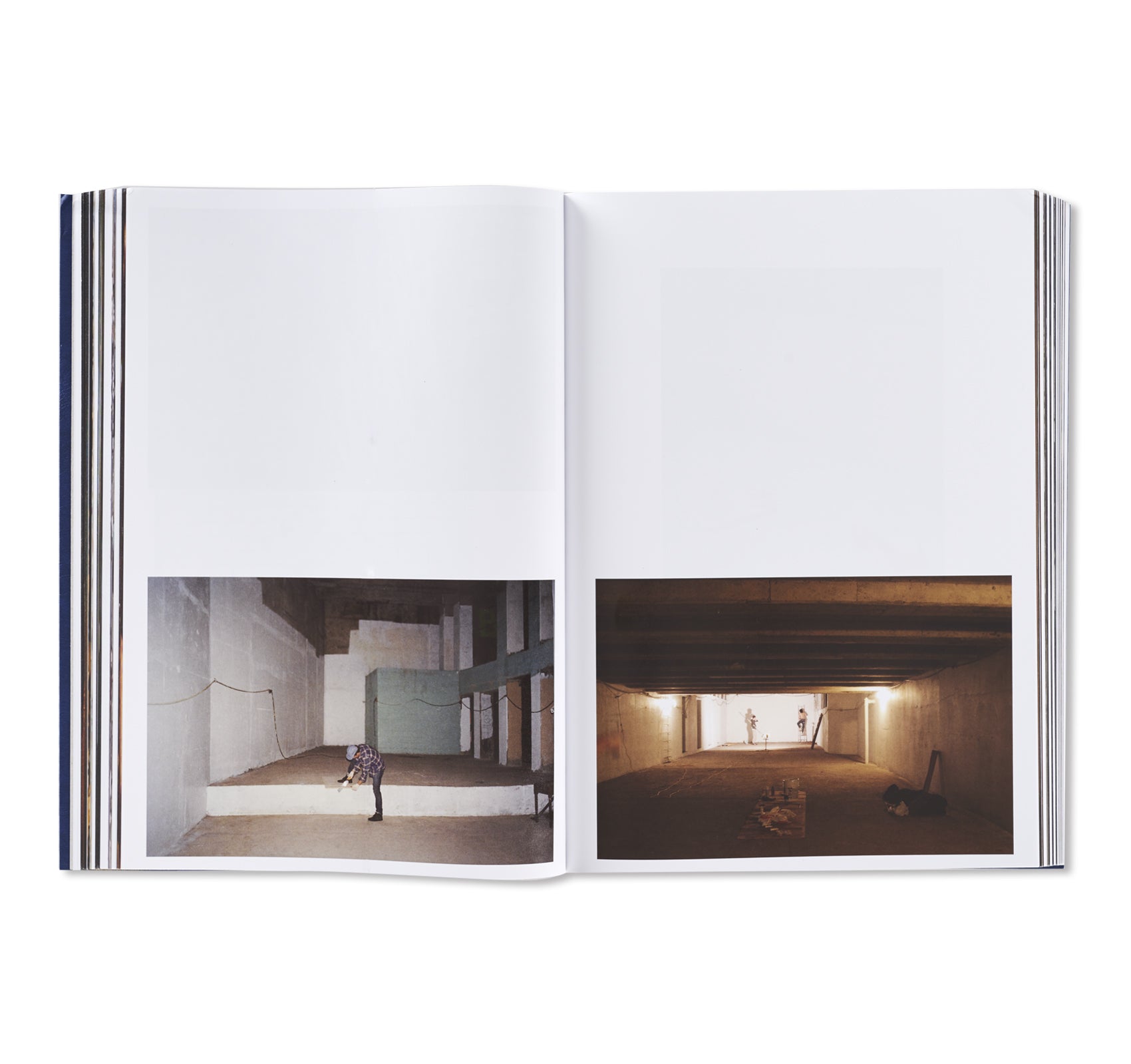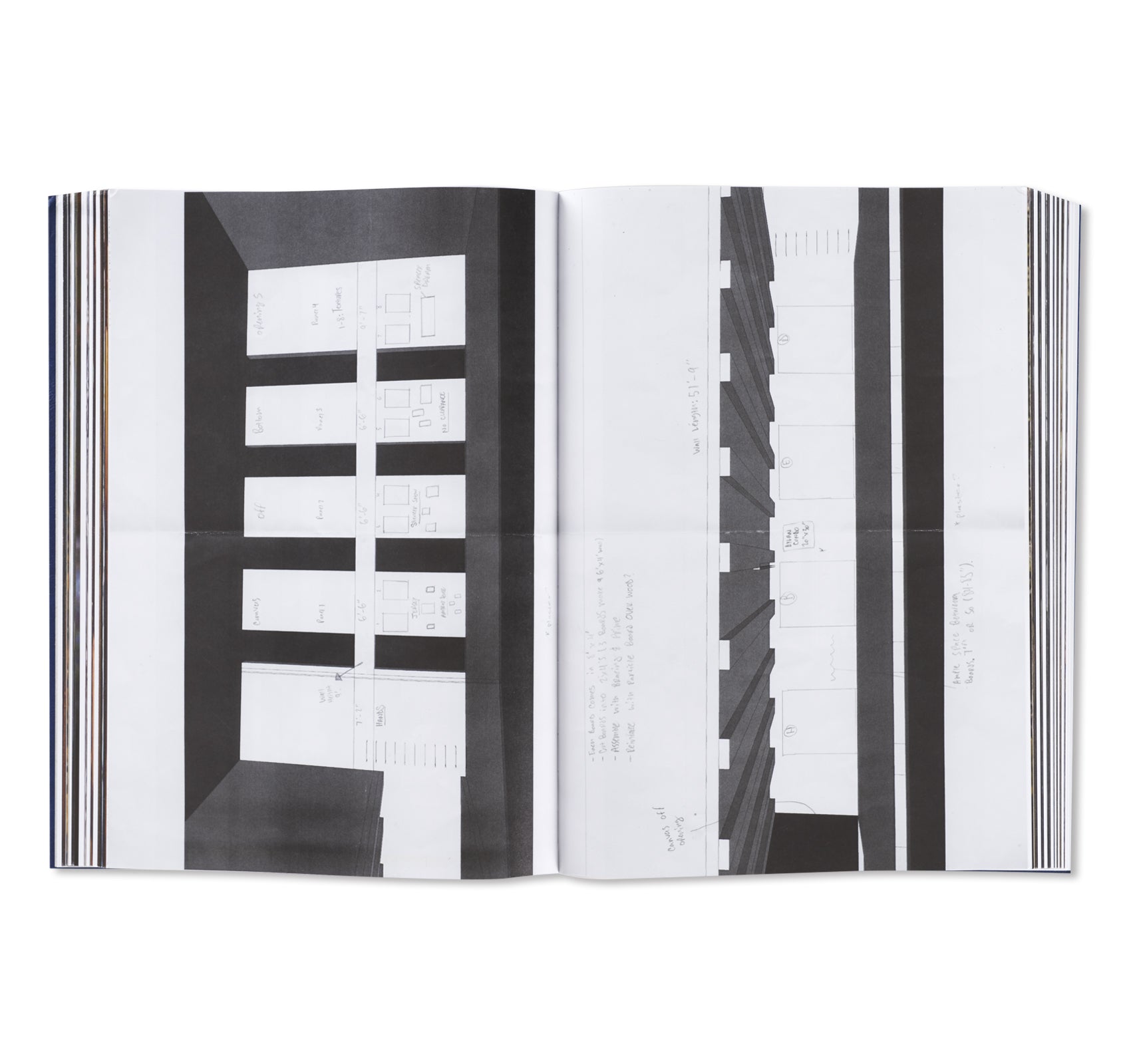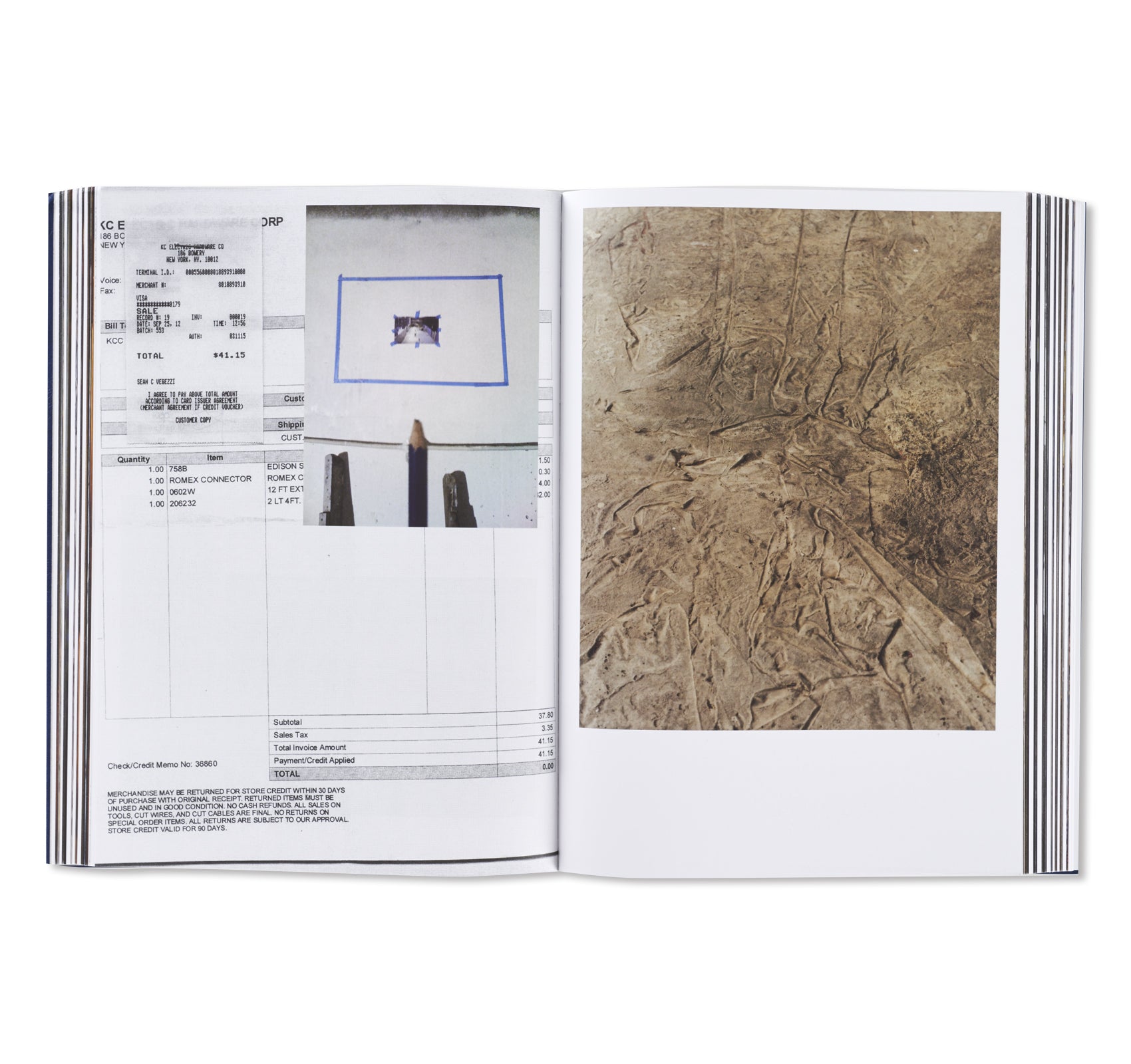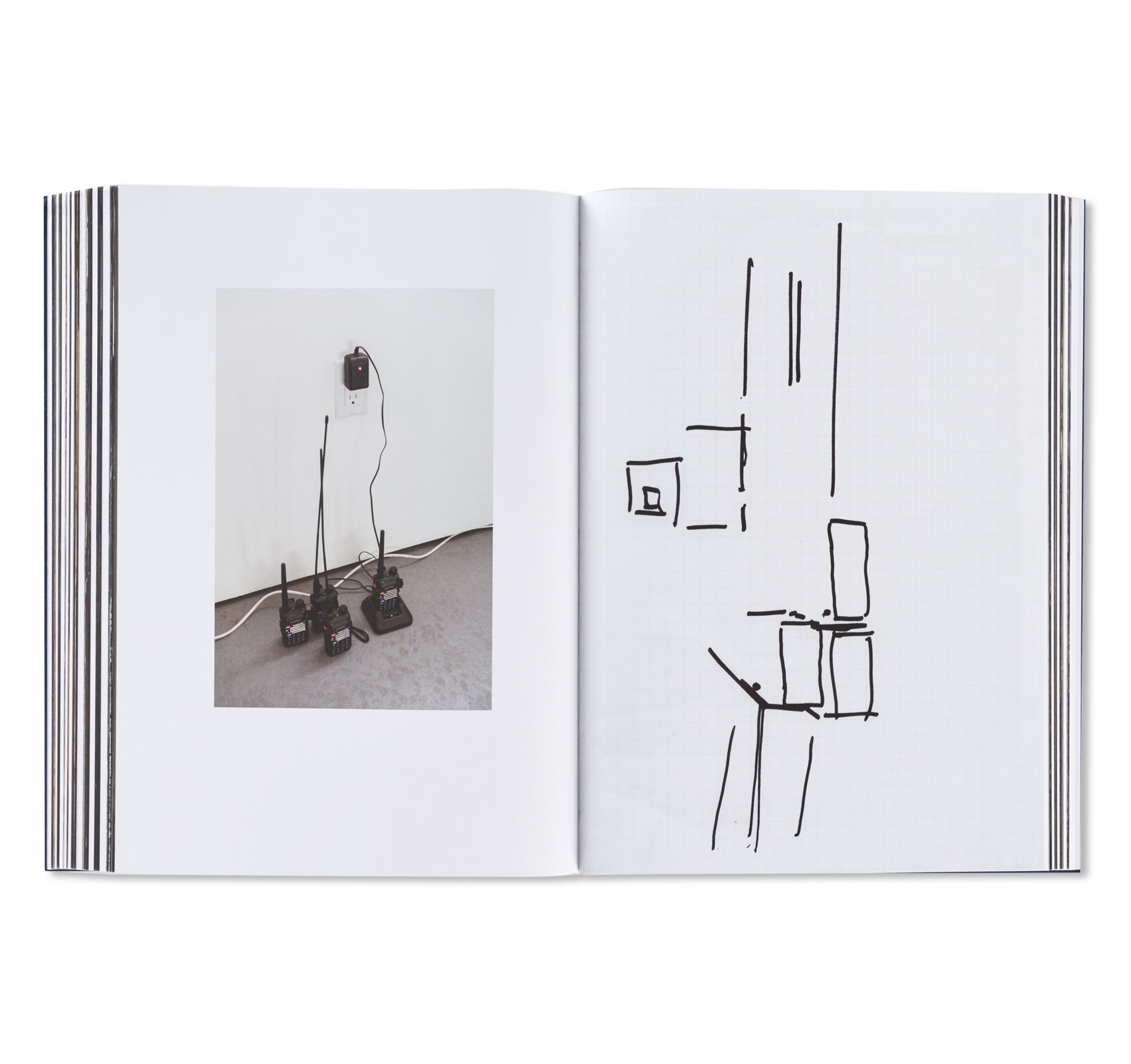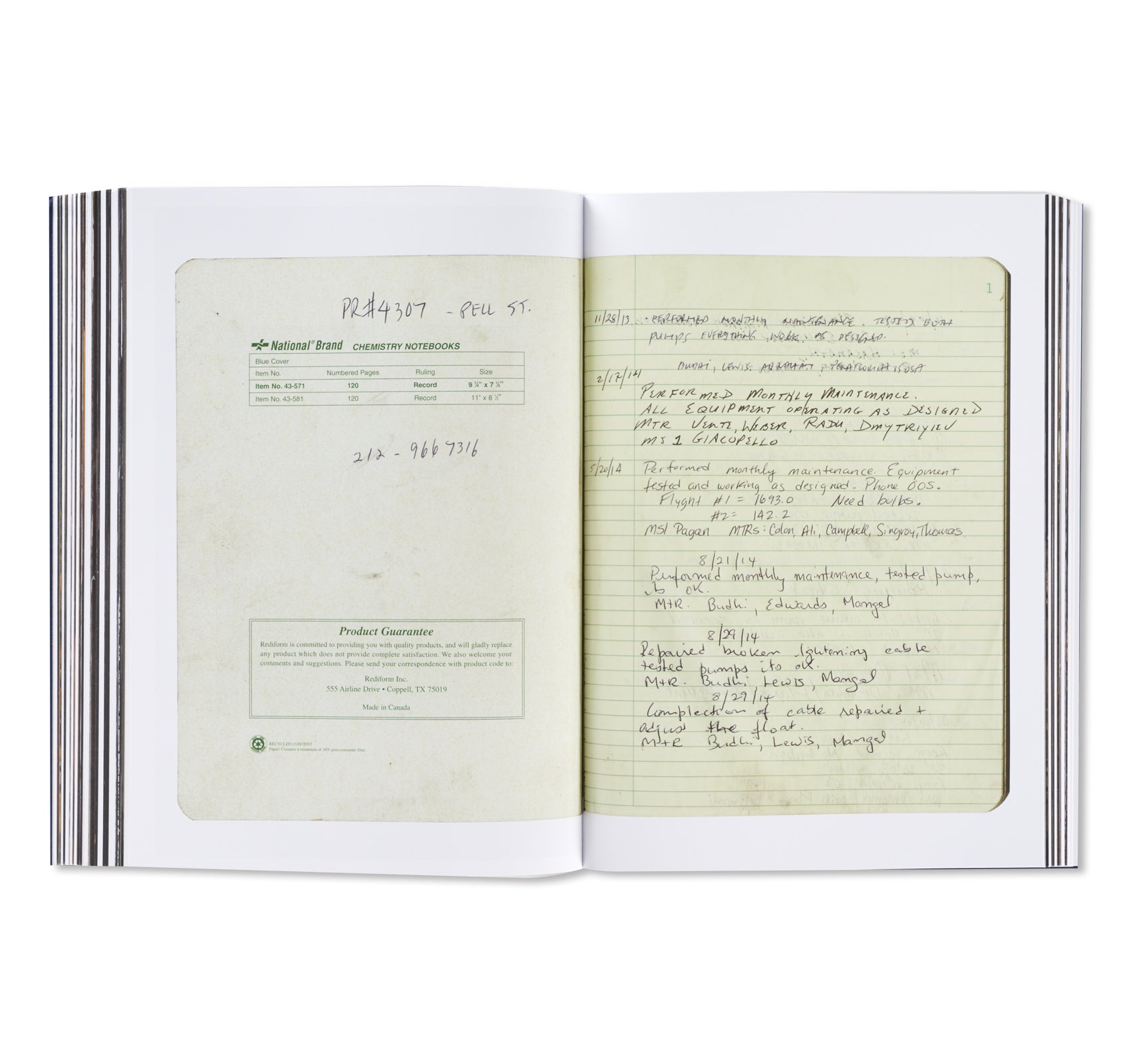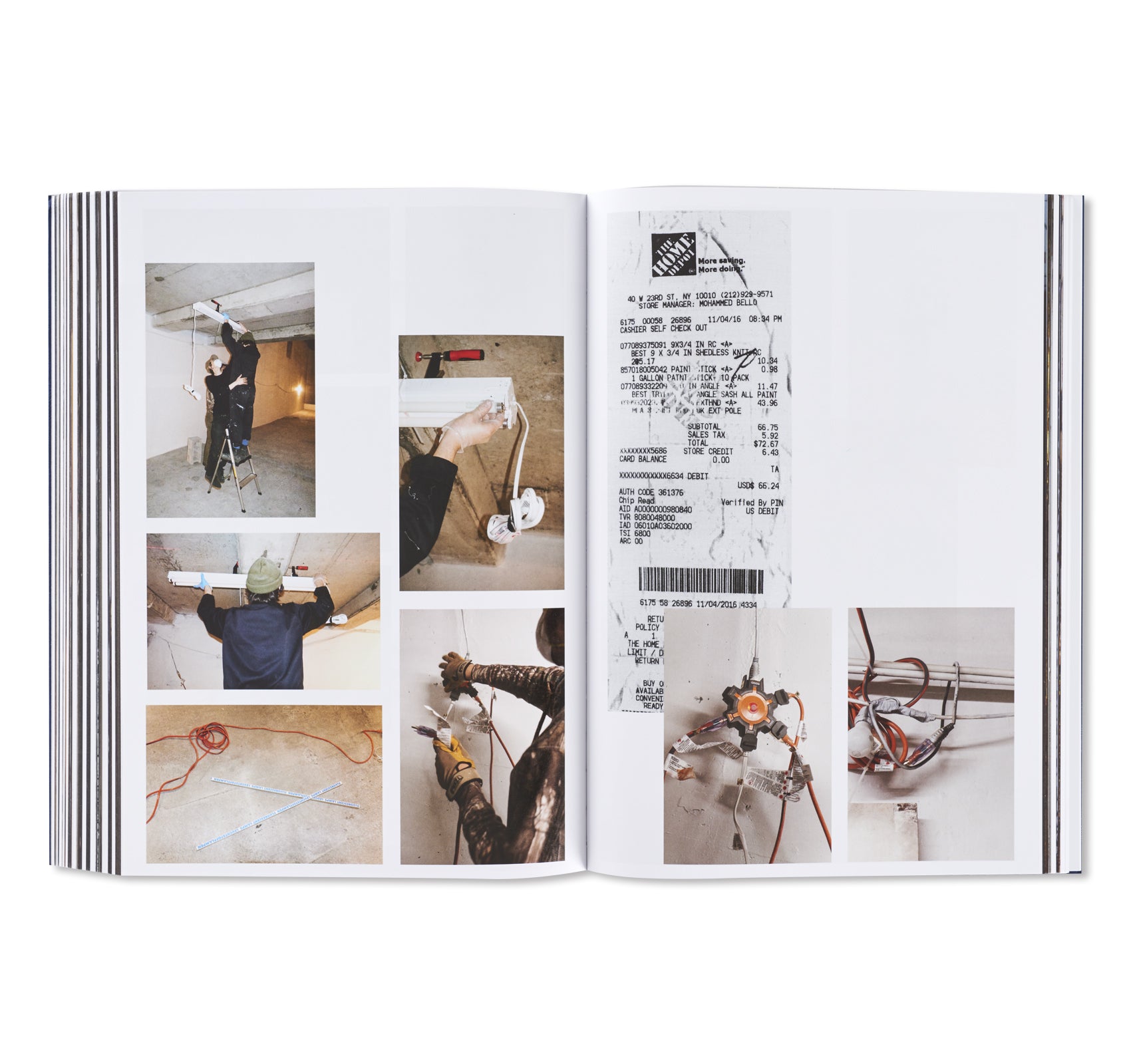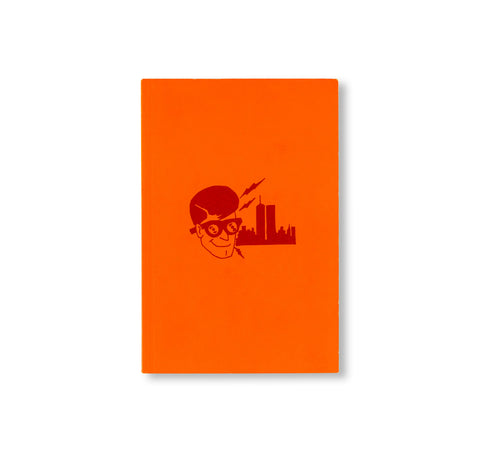DMYCC by Sean Vegezzi
アメリカ人フォトグラファー、ショーン・ヴァジェッツィ(Sean Vegezzi)の作品集。ニューヨーク・ロウアー・マンハッタンの地下に存在する洞窟のような広い空間を中心としたアーティスト達の10年間に及ぶ活動を記録した一冊である。その場所は、1970年代にニューヨーク市都市交通局(New York City Transit Authority)による地下鉄2番街線計画の一環として建設されたトンネル区分の一つだった。1919年に計画が始まったものの、世界恐慌や1970年代のニューヨーク市の財政危機などで計画が延期し中断されたため「幻の2番街線」と呼ばれ、2017年にようやく一部のみ開通した曰くつきの場所であった。初期工事後すぐに放置され、作者らが発見するまで誰にも使用されない荒廃した場所として扱われ、幻のような存在であった。『DMYCC』は、その場所に関連した名称の頭文字語であり、かつそこへ行きたいという願望を表した形であり、制作活動の業務記録帳のようなものであり、プライベートでレクリエーション的な彼らの占有地のドキュメンタリーである。急激な発展や、私有地と公的な土地の極端な流動化を経たこの地域で、作者と彼の友人たちは自律や解放を追い求め、何処とも定義されていないこの場所に引き寄せられ、思春期の早いうちからこの機能不全の建造物を出入り自由な広場、ステージ、クラブ、スタジオとして利用し始めた。完全に荒れ果てた状態となり人数の多い別のグループが去った後、作者は大規模改修して最終的にそこで写真展を開催することを計画した。準備に奮闘していたが、不運なことにその活動が見つかり、さらには禁止され、セキュリティー対策がより厳しくなったが、彼らのその場所での関係がプロジェクトの輪郭を築いた。
緩やかな時系列に沿ったストーリー形式で構成された本書は、結果的に広範囲に及ぶこのテリトリーのマッピングとなった。初期のあどけなさが残る探索の様子が写った刺激的な記録はアナログ写真やビデオスチール、レシート、設計図にまで及び、細部にまで触れながらも堅苦しさを残したアーカイブ的な構成を崩さず、公的文書のように収められた記録写真がレポートとして作品のコンセプトを着地させている。また、その場所の関係者や侵入者、そのやりとりや動きの図像化、移動手段の観察、ゴミやメモといったことを調査の対象とした。インデックス化することへの渇望やこだわりの強さは日に日に増していき、その様はまるでイメージの集積がその場所の所有者としての役割を証明するかのようである。このどうにも機能しなかった場所の粉塵を取り除き、排水路を使えるようにし、壁を塗り、配電線を修理し、照明を慎重に調整してリノベーションの質を保ち続けた。作者と友人たちは自治体の認可を得られる公式のものと、自由で非公式なものとの間の境界を壊したのだ。こういった活動を論理的な極地へと導き、物理的な境界や障壁を戦略的に取り除き、各々のタスクを科学捜査さながらにドキュメンタリー化した。その記録は、共感も批判をも生み、記録そのものが名もなき協力者としてその街を位置づけするだろう。
DMYCC by Sean Vegezzi documents the artists’ decade-long engagement with a cavernous underground area constructed beneath Lower Manhattan. It is one of several tunnel segments built in the 1970’s by the New York City Transit Authority for the Second Avenue Subway, a convoluted and controversial subway line that was proposed as early as 1919, and partially realized in 2017. After the initial construction of the tunnel segment, the space was quickly overlooked, and prior to its discovery by Vegezzi, the phantom-like provisional enclosure lay in a state of non-use and deterioration. DMYCC is an initialism that encompasses the physical space itself, the desire to gain access to it, and a shifting roster of efforts to install and enact a private recreational domain within it.
As their surrounding city experienced aggressive development and a hyper-securitisation of public and private realms, Vegezzi and his friends were drawn towards undefined spaces to pursue their own forms of autonomy and release. From early adolescence onward, they leveraged this piece of failed architecture into an alternate social forum, stage, club, and studio space. After a large party left the space in complete disrepair, Vegezzi planned a large-scale renovation, culminating in an exhibition of photographic works within the space. As intense preparation for the exhibition was unexpectedly discovered and halted, security measures increased and the group's engagement with the space took on the current contours of the project.
Presented in book form as a loose chronological narrative, the images in DMYCC eventually form a comprehensive mapping of the territory; ranging from early evocative analogue photographs of youthful explorations through to video stills, receipts, and architectural floor plans; concluding with full-scale photographic surveys that challenge bureaucratic structural reports in both detail and formal composition. Elsewhere, Vegezzi turns the methodologies of surveillance back onto the authorities and other intruders, monitoring their communications, mapping their moves, vehicles, their trash and their notes. Vegezzi’s desire for indexicality grows over time in extent and fastidiousness; as if the accumulation of images validates his acts of ownership without title. We see DMYCC develop from a contaminated space with non-functioning utilities into one treated with dust control chemicals to improve air quality, a working drainage system, primed walls, repaired electricity lines and meticulously considered lighting systems.
Through the quiet, disciplined nature of their renovation work, Vegezzi and his friends deconstruct the distinctions between sanctioned municipal overhauls and more informal ones. Vegezzi takes these gestures to their logical extremes, in which physical boundaries and barriers are strategically undone and each task forensically documented. These documents are sympathetic yet critical, positing the city as an unknowing collaborator.









